Ceramics blog
Questions from the list
A few months back I asked my mailing list subscribers if they had questions for me. Your questions were so good I had to share them all. Some are in french and I translated to english. I hope you like those and if you have more questions, feel free to reach out !

What underglazes/glaze do you use? I feel like a lot of the clear glazes I’ve used craze like – well, like crazy!
I use Amaco Velvets as underglazes, I sometimes switch to Speedballs which are also cool but sometimes still feel a bit chonky. I find that Speedballs work better on bisque, while Amaco is better suited to greenware. More on UNDERGLAZES : A BEGINNERS GUIDE.
Clears + underglaze is a whole subject and you will have to test many many combinations, I’m sorry in advance. However, I just wrote a whole piece about glazes ! If you’d like to read it 🙂
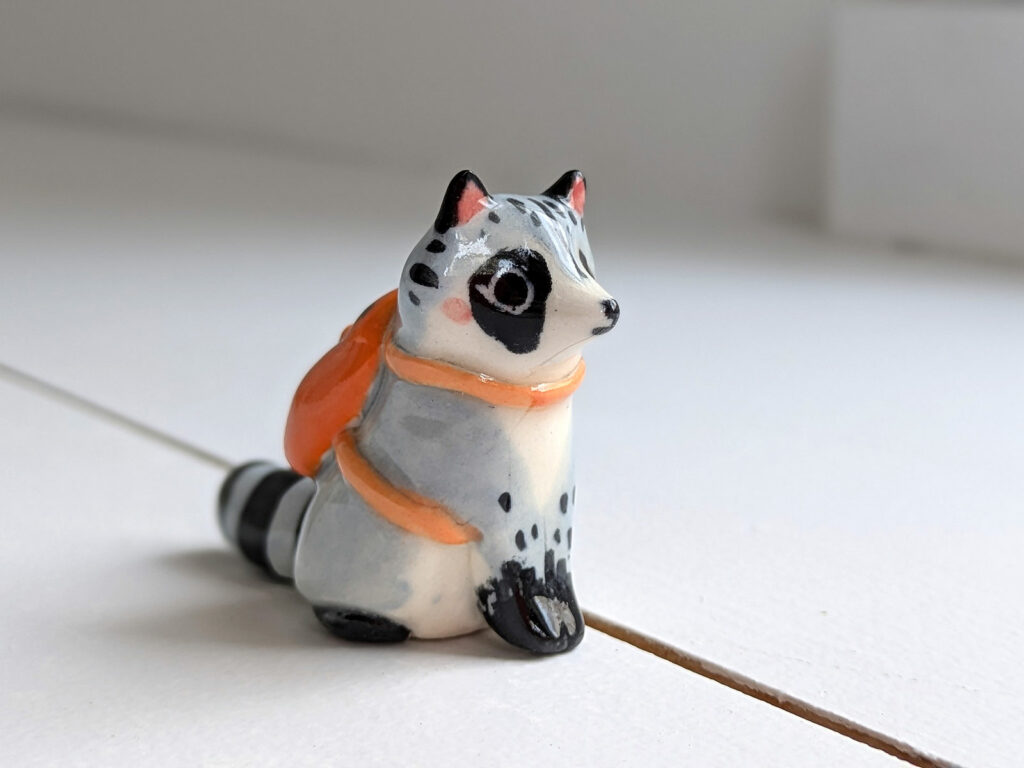
– How did you get started & land on creating figurines & tableware? There’s so many ways to create with ceramics.
I started by getting very frustrated with throwing lessons, I literally got backyard lessons XD It was not the best. Then I got into handbuilding and made a few figurines and people loved them so I pursued this. I got back to throwing years later when I got my confidence back, enough to learn by myself. I’m 95% self taught 🙂
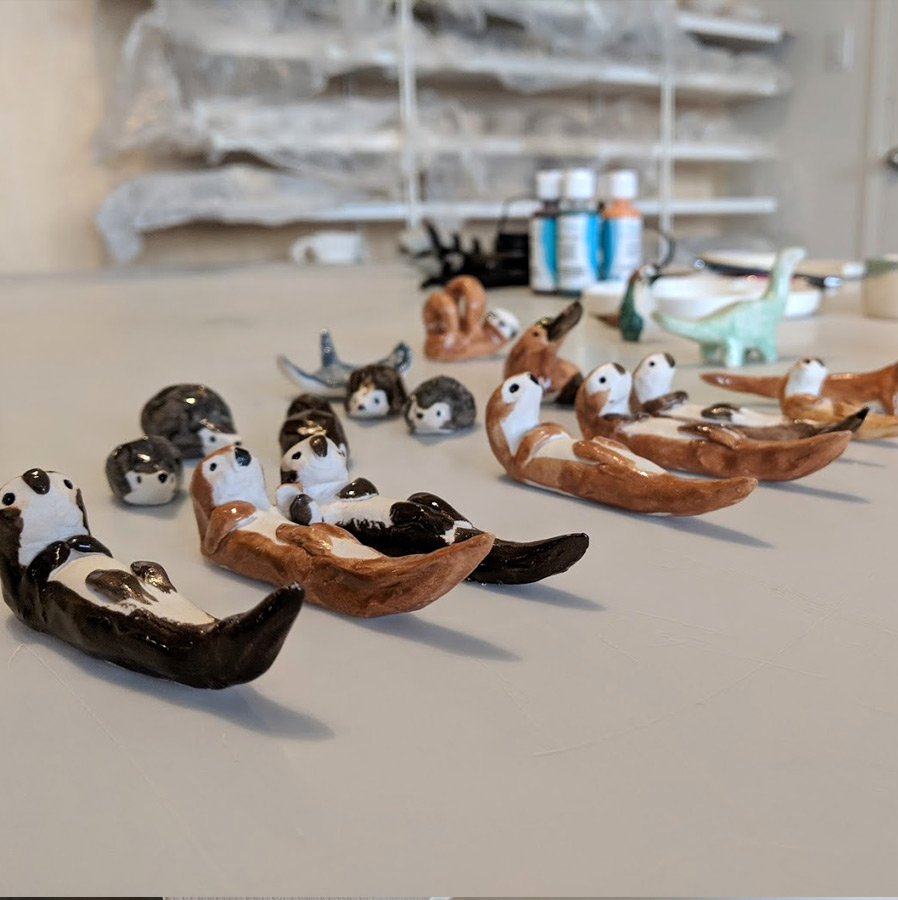
– What advice would you give a novice wanting to get started in the craft?
Get lessons and if you don’t like it, try with another teacher. Honestly, I think I could have gotten to where I am now much faster with an appropriate course. But here we are 😀
– What kind of commissions do you decline? I’ve been dreaming of a mancala set from you with little figurine pieces instead of marbles.
This is such a great idea ! I only decline human shaped stuff and copies of other’s work. Apart from that it’s usually very open. Commissions will reopen in January by the way.
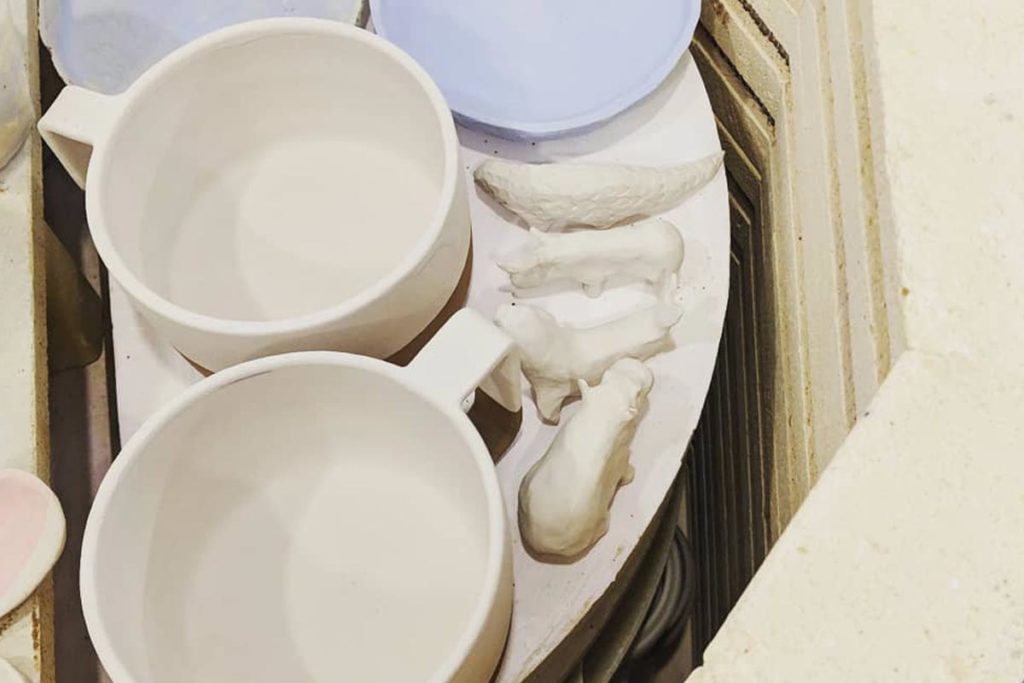
– Do you ever feel sad when pieces don’t turn out as you expected? Or is that what the testing phase is for? Like when you were using new glazes.
I absolutely feel sad and frustrated when something doesn’t turn out as I envisioned it. Pottery is the art of letting go and it’s a lesson I’m learning at least once a week at the studio. It’s ok but it’s never easy.
Testing helps mitigate failure, but not avoid it completely. Also, my ideal result is often something very precise and it’s not always what others see. So a failed one for me might be someone else’s prized piece. That’s why I sell second grades on ko-fi for example.
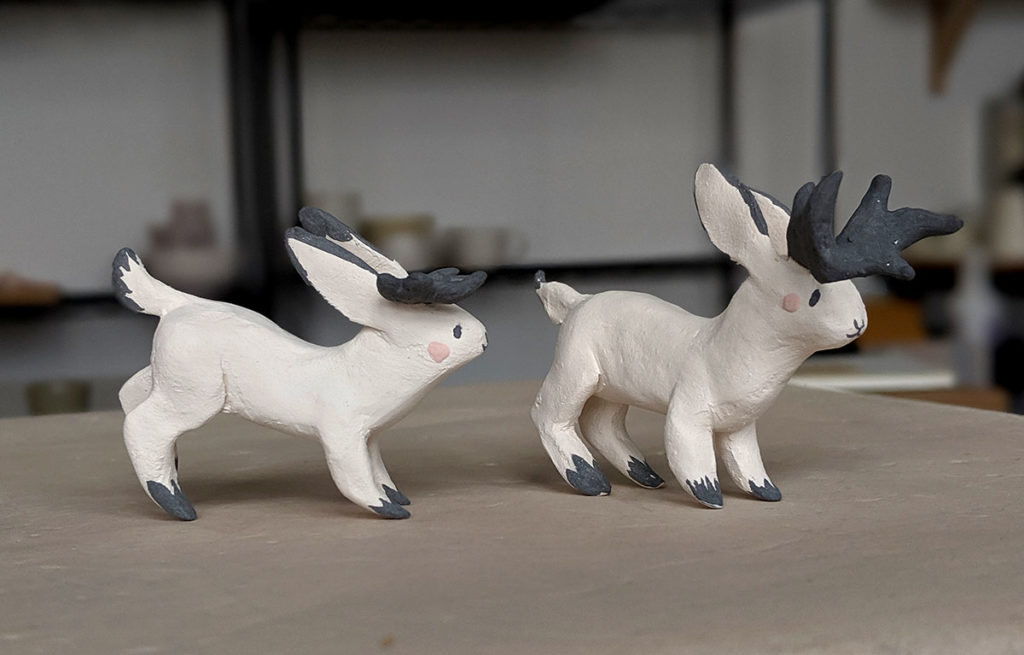
I would love to know if you know any good courses that shows the basics of sculpting small animals.
I don’t but I think I will make a few videos on this, hit me up with what you’d like to learn / see !
Doesn’t need to be professional at all. I just feel so in peace when I play with clay, I would be love to be able to do something cute and feel proud of my creations
I started this as a hobby, but I have this red flag that’s changing hobbies into jobs XD I know a lot of hobbyist potters and it’s like yoga or meditation to some. The final product isn’t the goal, the making and process is.

Comment fabrique-t-on ses propres couleurs à partir des émaux ? How does one make their own colors from glazes ?
Il existe de nombreuses ressources sur ca mais je ne suis pas encore specialiste des émaux, je suggère Glazy.org – is a good ressource for mixing your own glazes, although I am not an expert in glaze mixing, I use commercial glazes.
Est il possible d’avoir un rendu similaire si on n’a pas de four? Existe t il des alternatives au fait que l’on ait pas de four ? Is it possible to have a similar finished product without a kiln ? Are there alternative ways to fire ceramics ?
Non malheureusement, il faut un four car les températures minimum sont autour de 600-700 Celsius. On peut travailler avec un autre potier, trouver un atelier communautaire ou prendre des cours pour s’essayer et la cuisson vient avec en général. Je sais que des personnes font des tres petites pieces au micro-ondes avec un petit module mais je n’ai jamais essayé et ça a l’air dangereux de manipuler de si hautes températures dans une maison.
Unfortunately no, one would need a kiln because temperature for firing ceramics start around 600 Celsius. Alternatives are working with another potter, in a community studio or enroll in a course if you’d just like to try your hand at ceramics 🙂 I know that some people fired timy pieces in a microwave with a small module but I’ve never tried it and it seems hazardous in a home setting – these are very very high temperatures.
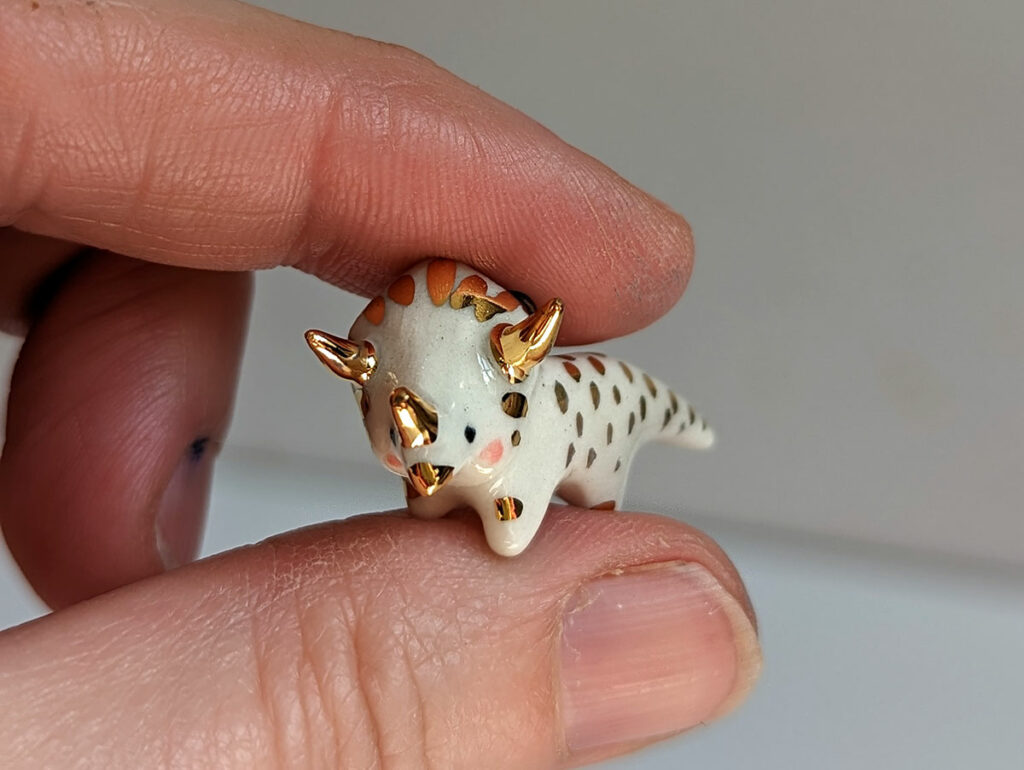
Comment fais-tu pour modeler de si petits animaux ? Ils sont tellement mignons !!!
J’ai des petites mains ? Merci !
Commences tu par le dessin ? Do you start with a drawing ?
Parfois oui, parfois non ! Tout dépend de l’inspiration et de la complexité du projet 🙂 Pour certaines statues avec différents éléments un dessin m’aidera. Parfois je n’ai pas accès à ma terre donc je dessine en attendant pour préparer des projets.
Sometimes yes, sometimes no ! It all depends on inspiration and how the project is complex or not. For some sculptures that include several items I will often sketch. Sometimes, when clay is not available like I’m out of town, I will sketch my ideas and prepare for later work.

The thing I wanna know about your ceramics is how you make all your painted motifs?
I paint them on my dry but greenware pottery (not yet fired), I usually draw with a pencil and then paint from light to dark colors with underglaze.
Can you add all the colors in one go?
Yes ! Except for the gold that comes after the piece is fired twice.

Do you need to burn them several times?
Yes, once for the bisque firing, with underglazes painted on the pieces to fix them to the clay. A second time for glazing. And a third for luster – meaning when I add gold to ceramics.
Especially when in the process do you add the gold details?
In the end when a piece is finished. You can read all about lusters – gold, white gold and pearl in this blog post about how I add gold to ceramics.
How does gold and shiny glaze vary from the rest?
Lusters are fired to a lower temperature, around 650-700 Celsius. They’re metallic suspensions in resin like material, once the resin burns the metal stays and coats the ceramic surface.
How do you know a layer of glaze is thick enough to show colors good but not so thick it “melts” in the firing?
It all depends on the glaze, some will need a thicker application than others, some are very forgiving and others will show every fingerprint you lay on the unfired piece. I don’t have a one size fits all solution, it’s all a matter of testing with your own materials until you achieve your desired result – which can take time and yes it’s not the fun part ^^
